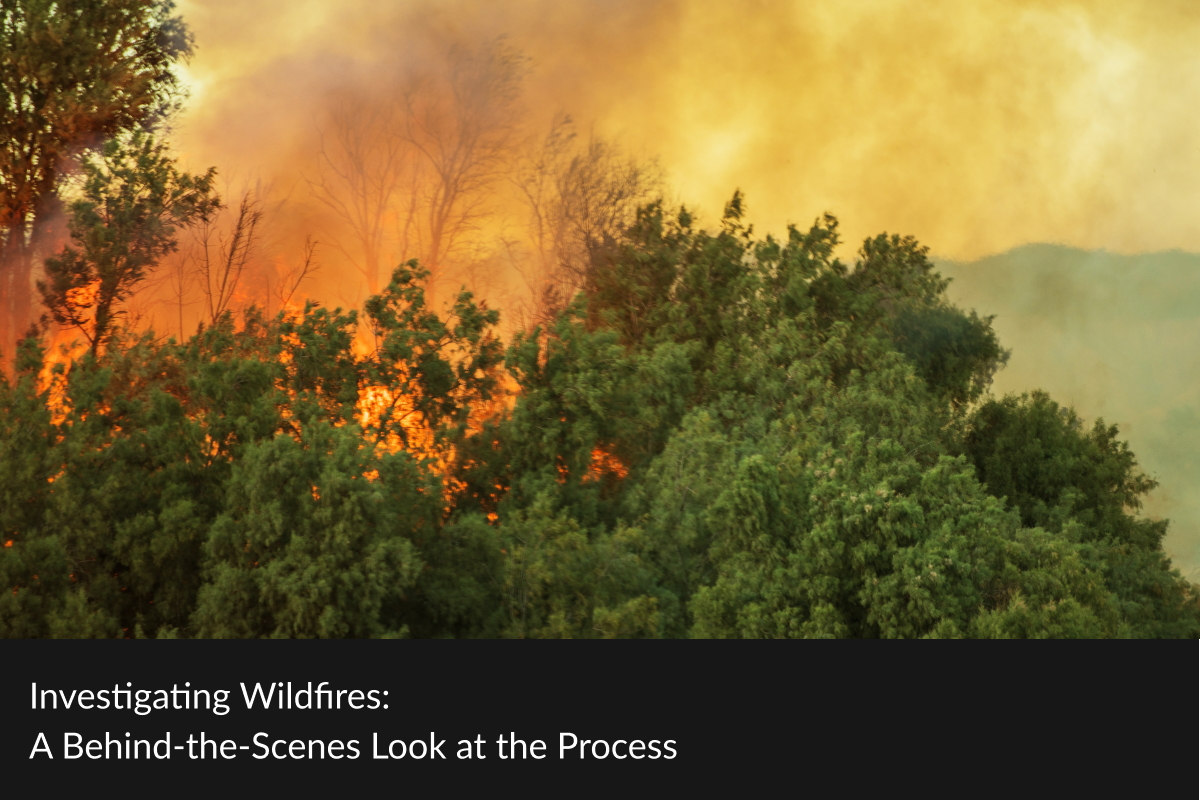Wildland fires can devastate communities, ecosystems, and infrastructure in a matter of hours. Determining how these fires begin is critical, not just for assigning responsibility, but also for preventing future disasters. At Clearwater Fire Forensics, wildland fire investigation is a specialized service grounded in environmental science, forensic analysis, and advanced technology. Our comprehensive approach ensures that every wildfire origin and cause investigation is both accurate and defensible for legal, insurance, and risk management purposes.
Comprehensive Scene Assessment in Complex Terrains
Wildfire investigations begin with a careful and thorough scene assessment. Investigators travel to the fire-affected area, which may span hundreds of hectares, and start identifying burn patterns, fuel types, and fire progression indicators. Understanding how a fire moved through grasslands, forests, or mixed vegetation zones helps narrow down where the fire likely started.
The team evaluates terrain conditions and environmental influences such as wind, humidity, and slope, all of which impact fire behaviour. Particular attention is paid to spotting V-patterns in vegetation, protection zones around objects, and burn severity changes—all clues guiding the team toward the origin.
Clearwater Fire Forensics brings a region-specific perspective to this phase. With deep experience across Western Canada, we account for the unique vegetation types, seasonal weather patterns, and topographic features that shape wildfire behaviour in this part of the world.
High-Tech Tools: Aerial Drones and Satellite Imagery
One of the key challenges in wildland fire investigation is scale. A small fire origin can be hidden within a massive burn area, especially when wind-driven flames consume large tracts of land. To meet this challenge, Clearwater Fire Forensics uses aerial drone mapping and satellite imagery to document the entire scene accurately.
Drones provide high-resolution imagery from multiple altitudes, capturing thermal data, topographic changes, and inaccessible locations. Satellite imagery allows for time-stamped views of the fire’s development, which can be cross-referenced with weather data, lightning strike records, and witness accounts.
These tools are invaluable for building a time-sequenced picture of the fire’s spread, identifying ignition points, and preserving visual records for legal proceedings.
Pinpointing the Origin and Cause
After the general origin area is identified, the investigation becomes more granular. Trained investigators—certified under CIFFC programs like FI-210 and FI-310—examine potential ignition sources, including discarded smoking materials, powerline malfunctions, equipment sparks, or arson-related evidence.
To support the origin and cause determination:
- Canine detection teams may be deployed to locate accelerants or other trace evidence in rugged terrain.
- Fuel moisture analysis helps determine how easily local vegetation could have ignited.
- Witness interviews and firefighter debriefs add essential context to the timeline and behaviour of the blaze.
All evidence collection follows the PMS 412 Guideline for Wildfire Origin and Cause Investigations, a recognized standard for methodical and defensible wildfire forensics.
Collaboration with Land Management and Regulatory Agencies
Clearwater Fire Forensics regularly works in collaboration with land management agencies across Western Canada. These partnerships enhance access to relevant data, maps, and land use records, and ensure that the investigation respects jurisdictional protocols.
By combining forensic science with insights from forestry, environmental management, and fire suppression operations, the investigation becomes a multi-layered effort. This integrated approach often leads to faster, more accurate conclusions.
From Evidence to Courtroom: Reporting and Testimony
Once field investigations and lab analyses are complete, Clearwater Fire Forensics compiles findings into a detailed, structured forensic report. These reports are designed to withstand scrutiny from insurers, legal teams, and government agencies. They include:
- Scene diagrams
- Evidence logs and photos
- Analysis of fire dynamics and spread patterns
- Determinations of origin and cause
Should a case proceed to court or arbitration, our team provides expert witness testimony to communicate the findings clearly and professionally. The ability to translate technical data into compelling, factual narratives plays a crucial role in ensuring fair outcomes.
Certified, Reliable Wildfire Investigators in Western Canada
Wildland fire investigations demand scientific precision, a deep understanding of local environments, and a strong grasp of legal standards. Clearwater Fire Forensics delivers on all fronts. Our certified investigators are trained to the highest Canadian and international standards, bringing proven expertise to wildfire cases across Western Canada. Whether working with insurers, municipalities, or legal teams, we provide trusted insight backed by regional experience and forensic discipline.
We serve insurance adjusters, municipal agencies, legal teams, and private landowners with investigations that are accurate, timely, and defensible.
If you’re seeking clarity after a wildfire event or need professional support for a legal or insurance case, contact Clearwater Fire Forensics today to schedule a consultation.


